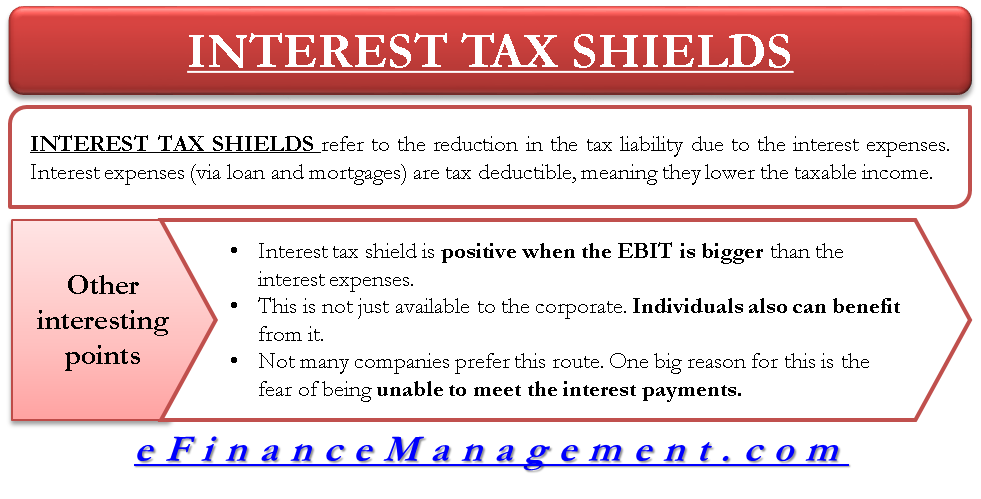Interest tax shields refer to the reduction in the tax liability due to the interest expenses. Companies pay taxes on the income they generate. Interest expenses (via loans and mortgages) are tax-deductible, meaning they lower the taxable income. Thus, interest expenses act as a ‘shield’ against tax obligations.
For instance, Suppose Company A has earned a profit before interest and tax of $40000 for a year. If the tax rate is 10%, then the tax liability will be $4000. Assuming Company A also has an interest obligation of $5000, the total taxable income will be $35000 ($40000 – $5000). Now, the tax liability will be $3500. This means the debt obligation helped Company A to save $500 in tax liability.
Motivation to Take More Debt
We can say that the interest tax shields are the tax benefits from the financial structure of a company. For instance, taking a loan rather than issuing equity increases the tax shield as interest on a loan is tax-deductible while dividend paid on equity is not. So, in a way, interest tax shields motivate the companies to take on debt to finance projects rather than using equity.
Note that the interest tax shield is positive when the EBIT (Earnings Before Interest and Taxes) is bigger than the interest expenses.
Tax Shields for Individuals
Interest tax shields are not just available to the corporate. Individuals also can benefit from this. For instance, if they have a home mortgage, they can use the interest payment to create a tax shield. Similarly, interest on Student loans also acts as a tax shield.
One can say that taking on more debt makes you liable to pay regular interest expenses, but at the same time, the same interest helps you to lower your tax liability.

Interest Tax Shields – Can Be Risky
Despite the evident benefit of the debt, not many companies prefer this route. One big reason for this is the fear of being unable to meet the interest payments. Another reason is the “covenants” that comes along with the debt.
Covenants are basically the restrictions or the points that a company needs to agree to for obtaining the debt. For instance, a company may have to agree to refrain from a specified action, like not selling assets. Also, certain covenants require the company to maintain certain ratio levels, like Debt Equity ratio or Debt Coverage Ratio.
Basically, these covenants are meant to ensure that a company is able to meet its financial obligations. In case, a company is unable to meet these covenants, it may make the debt even more expensive, leading to severe financial pressure on the company.
To recover from such situation, management may refrain from productive investments or even pull money out from current operations to service the debt. This could lower the value of the firm on the basis of future cash generation.
Conclusion
So, before you decide to take on debt for the purpose of benefiting from interest tax shield, it is essential that you understand how it works. Debt is an important part of business valuation, but too much debt may impact future cash flows as well. You must decide to go for the interest tax shields if you are confident in the future cash flows.
Also, the benefits of the interest tax shield depend on the tax rate of the taxpayer. So, understanding current and future macro policies also help you to decide on the debt levels.

